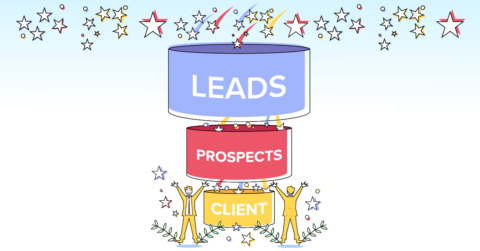
Speaking To Your Donors Through Storytelling
01/13/23
How do you speak to your donors in a visually compelling way? And even more importantly – why do you have to?
Today, we answer these two questions. As always, we also give you some actionable advice on improving your own organization’s skills in speaking to your donors. And trust us – there’s one clear way of doing this!
Why Speaking To Your Donors Through Storytelling Is So Essential
It all has to do with people’s emotions. Emotional reactions are what get people to act. They are what get people to feel a strong connection with your organization. These emotions are what get people to donate to your cause, and in the long run, can have one of the biggest effects on your organization’s goals.
Of course, there are a number of ways you might start speaking to your donors in a visually compelling way. This can include everything from professionally done infographics to charming copy used throughout your company.
Still, out of all the ways you can start speaking to your donors, one strategy is shown time and time again to be the most effective: storytelling.
Humans were designed to love stories. It’s how we’ve passed on information for thousands of years, and how we have grown closer to other people.
Storytelling is who we are, and if you are trying to drive results for your organization’s campaigns, it is the way you want to be communicating with your donors. Many organizations (in both the private and public sector) have realized this. As for how you get better?
Well, we have four pieces of advice we follow ourselves!
How To Improve Your Storytelling
Once you’ve decided to inject more storytelling in your communication with donors (and trust us, you should!), there are a number of different ways you can set about improving it. Here are four you might consider.
1) Always be on the lookout for everyday things that might make a good story.
When people think about storytelling, there is often the tendency to exaggerate what it actually is. This is destructive, as it often stops people from getting started in the first place. To prevent that from happening, consider storytelling not as some grand gesture of plot and action, but simply the everyday happenings at your organization that your audience might find interesting.
The main takeaway here? Pay attention – you never know what is going to make a good story. You’ll need a little bit of creativity, of course. But as long as you are approaching life with the eye of a reporter, you might be surprised what story worthy material you come across.
2) Don’t be afraid to inject a little personality into your stories.
People get bored easily. They have limited attention spans, and if you want them to pay attention to you, an interesting story is a great way to do that.
A second benefit of personality is the trust that you gain. Have you ever noticed that it’s hard to trust a business that appears too squeaky clean? How a business that shares its actual story, warts and all, is somehow a business that you like more? This is a common experience, and you use it to your advantage.
3) Get your audience to tell your story for you.
While telling your own story is great, it’s even more convincing if it comes from someone else. Think about it: will a potential donor believe what you say about your organization more, or what a direct beneficiary says about it? The fact is, the most convincing testimonial is a positive word that you didn’t ask for – this is exactly how great stories function.
To encourage people to tell your story, there’s a number of different things you can do. There are also a number of different formats you might consider. We cover it all in our post about content marketing.
4) Use some of fiction’s most popular storytelling techniques.
If you’ve ever read a story that just wouldn’t let you go, that you simply had to finish before falling asleep, there’s a good chance that the story employed the use of a number of different storytelling techniques. No surprise here – this is how great stories become addicting.
While your own stories you choose to tell to donors will vary, here are a few different techniques you might consider:
- Hooks. How does your story start? The very beginning is perhaps the most important part, as this is what gets the reader of the story sucked in. This is called the hook.
- Open loops. You always want people to come back for more. To get invested in a certain story and to give you their full attention over time before the story is resolved. Using something like the open loop, you can.
The hero’s journey. Just one type of story format, the hero’s journey is a great way of telling a story that is inherently engaging. If you can somehow fit in your donor as the hero of the story, you can expect great results.
…
Are you an enterprise, nonprofit or small business looking for help on your website? Give us a shout! We provide a free consultation. Email us at info@lughstudio.com or call us at (718) 855-1919!









